Steph W. from SEOPressor


...help you check your website and tell you exactly how to rank higher?


81
score %
SEO Score

Found us from search engine?
We rank high, you can too.
SEOPressor helps you to optimize your on-page SEO for higher & improved search ranking.
By winniewong on May 27, 2019

As a search engine optimization (SEO) content writer who has been writing on topics from on-page optimization to semantic search, I am frequently asked:
“What is the ideal keyword density percentage in SEO?”
Keyword density tells you how often a targeted keyword appears in a text over the total number of words present in a text.
In SEO, keyword density can be used to determine whether a web page is relevant to or how relevant to a specific keyword.
Simply put, keyword density is the percentage of a keyword in a web page that can affect its search result position.
There’s a lot of different calculations floating around the web but the basic always boils down to:
(Number of times a keyword appears / total number of words) x 100%
Example:
(25 / 2000) x 100% = 1.25%
So the keyword density would be 1.25%.
Which means that keyword appears approximately 1.25 times per every hundred word in that single web page.
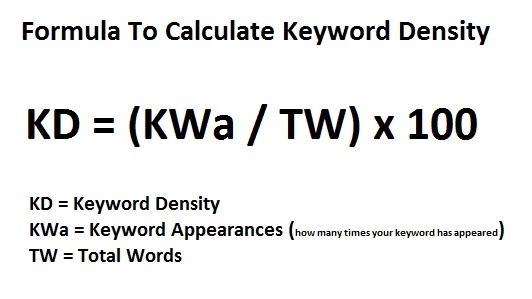
During the late 90s, SEOs can tell you with certainty that the optimum keyword density should be somewhere from 2-3%.
But now, anything from 1-5% should be a safe bet.
Lesser than that, search engines will have difficulty associating your content with your targeted keyword. More than that, they may flag you as keyword stuffing and discounting the quality of your content.
At SEOPressor, we recommend having a keyword density of 2-4%.
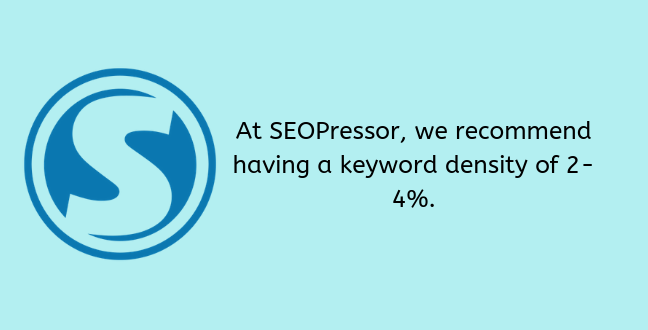
That’s the safest ratio that won’t hinder your natural writing but still useful to show you a warning that “Hey! Maybe you want to turn down a knob, that’s starting to look spammy.”
It’s simple, you just need to insert more of SEO keywords into your content!
We recommend adding your keyword at your headline, the first 100 words of your content, and the last 100 words of your content.
Having mentioned your keyword early in the content can better help Google to better associate your content with your targeted keyword.
Let’s take this post, this one that you’re reading, as an example.
If the headline reads “SEO Technique Regarding Keywords Explained”, can you understand, at a glance, that it’s gonna be talking about keyword density? Probably not, since it’s so vague.
So having your targeted keyword in your headline and early in the content is always a good thing cause you’re making things straightforward and clear.
Having your keyword in the headline and early in your content is not only good for your SEO, but it’s also good writing habit for informational content.
Try fitting your keywords into your subheadings as well. That’s a good way to help your readers feel more focused on the main topic you’re discussing.
But don’t stuff every single subheading with a keyword. That’s overkill. I’d recommend that you get help from a keyword density checker.
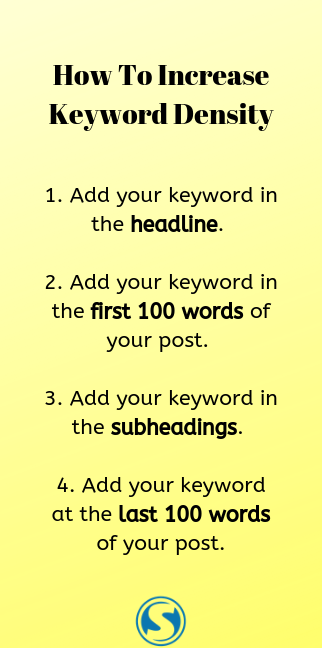
A long long time ago, there exists a magical optimum keyword density to make any pages rank. But everything changed when Google unleashed the Panda update.
Pathetic attempt at dramatic storytelling aside, keyword density exists, because it used to be a ranking factor for Google.
You see, back in the younger days of Google, they tend to rank a certain page better if the keyword used for a query appears more in the text. This means having a higher keyword density or keyword stuffing is actually a legit technique to help you rank.
But, Google soon realized that their system is gamed and mediocre or low-quality web pages with no real content other than repeating a keyword, again and again, is being ranked high up at the search result page
To curb that behavior, and of course, to make search great again! Google pushed out a huge algorithm update called Panda to make damn sure that keyword stuffing will not work again.
Keyword density is now mostly used as a part of the many on-page SEO checker tools.
Tools use keyword density as a way to gauge the relevancy of content to the keyword and warn against keyword stuffing.
According to Google, there are 3 types of keyword stuffing.
The third type is the one that keyword density checkers targeting.
Let’s see. In that short paragraph of 33 words, the keyword “custom cigar humidor” appeared for a grand total of 5 times. So, (5 / 33) x 100% = 15.152%, that’s more than 3 times higher than the recommended maximum keyword density of 4%.
As we mentioned before, keyword density is simply the percentage of a keyword in a block of text.
We can understand keyword stuffing in this context as having an absurdly high keyword density.
Now there’s a reason why Google moved on from relying on keyword density as a ranking factor. You see, when you’re keyword stuffing:
So, the verdict is clear. You simply won’t get a good ranking with keyword stuffing. Remember to keep an eye on your keyword density checker to make sure it’s less than 5%.
So, long story short, what does keyword density means now?
Since keyword density was confirmed to be a ranking factor, some SEO or SEO tools do not want to simply cross them out as being irrelevant now.
Now, keyword density is often included in SEO tools to act as an indicator to let writers know whether their writing risks being too stuffed with a certain keyword. When that happens, a web page may be flagged and thus not being able to rank higher for their targeted keyword.
A great example of an SEO writing tool that evaluates your writing’s keyword density is LSIGraph’s Semantic Writer. Semantic Writer analyzes your writing in real time and tells you if your content’s keyword density is too low or too high.
Why not? The most important information we have about keyword density is this: it was a ranking factor.
Well, perhaps Google has really moved on from this, but it’s always good to have more guidance right? Especially since keyword stuffing also generally means bad writing. At the very least, you’ll have a gauge to check if you’re abusing the same word for too many times in a piece of content.

Instead of replacing, contextual keywords are now actually a part of how Google evaluates keyword density.
Instead of only identifying one keyword, then hang on it to determine how relevant a web page is, Google is expanding their ways around understanding and analyzing language, which is the basis of understanding contents then ranking them.
Latent Semantic Indexing keywords, or, LSI keywords are simply a kind of keyword that is closely associated with your targeted keyword AND acknowledged by Google.
The similar points between LSI keywords and keyword density are both of them help Google understand how related your web page is to your targeted keyword.
Just like normal keywords, if you repeat the same LSI keyword again and again and again in your web page, that will be counted as keyword stuffing as well.
The key to using LSI keywords is variety instead of quantity.
Try to include different LSI keywords in your web page instead of repeating the same one.
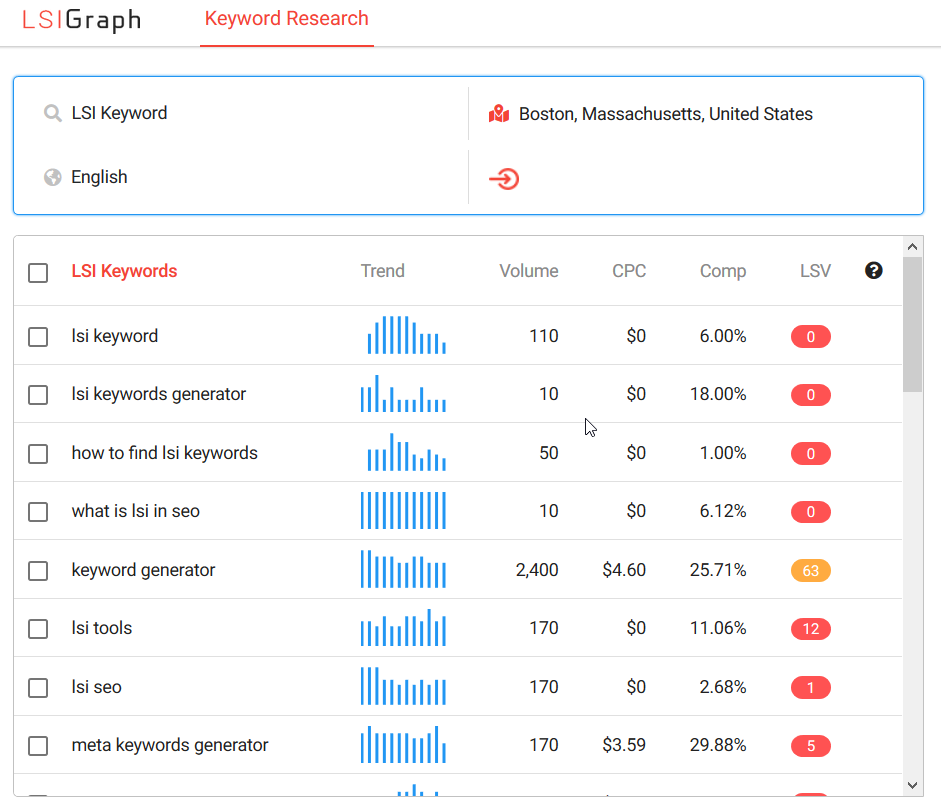
As you can tell by reading this far down, keyword density is no longer part of the keyword strategy that you should focus on.
Instead, you should plan your keyword strategy by targeting a list of keywords that fit the searcher’s intent.
Instead of obsessing on the number of times a keyword is mentioned, you need a list of related keywords that the users will use to search for your targeted keyword.
Let’s say your targeted keyword is gardening.
If a user wants to learn about gardening, the related keywords can be gardening for beginners, how to start a garden, gardening 101.
If the user is looking for gardening tools then the related keywords can be cheap gardening tools, must-have gardening tools, gardening tools set.
You see, even if the base targeted keyword is the same “gardening” the related keyword differs according to the searcher intent.
As far as I know, there are no tools that can just give you a list search intent targeting keywords on a silver plate. It’s more about using a variety of keyword tools together with a lot of googling then analyzing and retrieving the keywords you need.
Starting with Google is your obvious bet.
Now imagine you’re looking to buy some garden tools, what would you type in that search bar?
Now look at the search result you got, what would you tweak, or what is Google suggesting that you tweak in order to really get the results that serve your purpose, buying some garden tools?
Those are your starter keywords.
Now, here are two things that you should take note of when you’re googling.
First, the autocomplete suggestion.

Notice how different the suggestions are but still conveys pretty much the same meaning with the query I typed in?
Think this, do you instinctively click on whatever Google suggests when you’re repeatedly searching for something?
If you do this, then your potential clients must be doing it too.
What you need to do is list down all the varieties of your queries, those are your search intent targeting keywords.
Sometimes, the autocomplete suggestions can turn out to be not that helpful, or it seems…
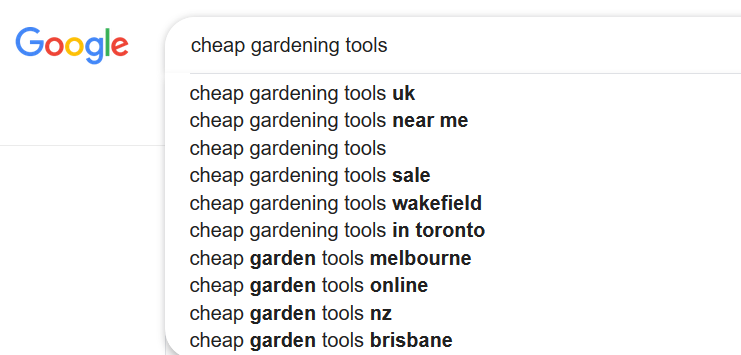
Look at this, all those suggestions aren’t really useful to create any contents from right?
But, this shows you the searchers’ intent. They’re looking to buy cheap gardening tools from sellers that are near them, which means you should make your shipping options or physical store address as obvious to the search engine as possible if you want to rank for any queries of this kind.
Second, the related searches list.

As you can make sense from this list, people searching for cheap gardening tools are probably also beginners in gardening. So their purpose for searching that keyword can be a mix of looking for information and looking for actual products to buy. That’s why you’re seeing quite a few queries aiming to get more basic information on these tools.
If you see a lot of related searches like this for your keywords, perhaps you can start considering creating guides and blog posts on this subject. That way, you can bring in more visitors to your website that has a bigger chance to convert into paying customers.
And if it’s there, the people also ask box.
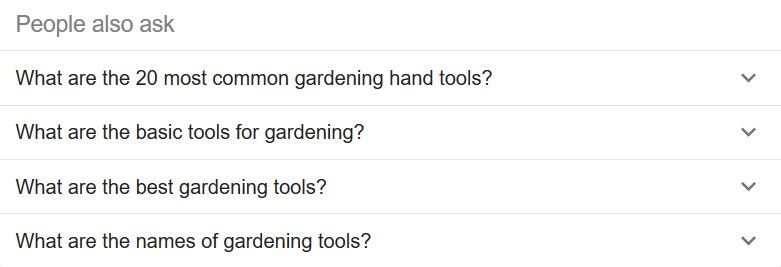
Sometimes you’ll see this expandable question box among your search result. This is a haven for keyword and search intent researching.
The box is infinitely (to a certain extent) expandable and provides dynamic results based on which question you clicked on to read more.
You can click on the question and observe how it changes after a few clicks.

You see, just a few clicks from suggesting cheap gardening tools you get to landscaping which is more advanced and different from mere gardening.
This shows the possibility that those searchers looking for gardening tools might be very well interested in landscaping as well, which opens up another keyword and topic to explore.
Taking a look at technology for natural language processing now, today the buzz in the SEO world is about creating relevancy.
Google has gone well past keyword density and frequency to look at the meaning of each word and how they related to the query at hand.
In fact, for years, Google has been implementing a new natural language processing (NLP) called word2vec and this provides a new focus of large content corpora and co-occurrence statistics of words to define the relevancy and relationship of words in context.
In simpler SEO terms, this means it is now beneficial to create content that covers a topic as thoroughly as possible. But often this can also call for the risk of excess irrelevant content that can dilute your topic focus, and that’s why we recommend you to use BiQ’s Content Intelligence.
It is the only tool around that is powered by AI to analyze your content’s WordVector and compare them to the Top 10 ranking results to tell if your content is highly relevant.
And it’s easy to use, just paste your content URL and type in your target keyword, and the tool will analyze your whole content and let you know which paragraphs you need to make the edits.
At the same time, you can also be aware of your tone of conversation and ease of readability which is important in crafting the best content.
The best part is, BiQ offers free tier access for new signups, so you can try it out and explore!
Keyword density has been retired as a ranking factor but it’s still a good indicator to make sure you’re not keyword stuffing your content to death.
Moving forward, content writers should focus more on researching for user intent targeting keywords and optimizing based on word vectors instead of obsessing with keyword density.
Updated: 19 December 2025


Save thousands of dollars (it’s 100x cheaper)

Zero risk of Google penalty (it’s Google-approved)

Boost your rankings (proven by case studies)
Rank High With This Link Strategy
Precise, Simplified, Fast Internal Linking.
